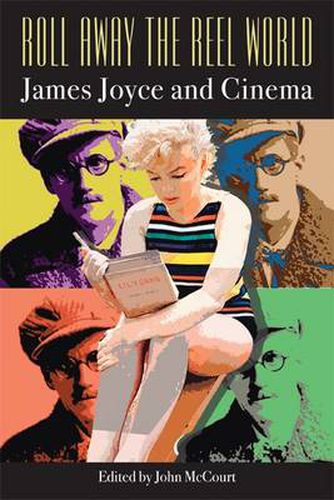Readings Newsletter
Become a Readings Member to make your shopping experience even easier.
Sign in or sign up for free!
You’re not far away from qualifying for FREE standard shipping within Australia
You’ve qualified for FREE standard shipping within Australia
The cart is loading…






This book focuses on Joyce’s interest and involvement in early modern cinema and his subsequent thematic and formal borrowing for this genre; It will look at cinema’s interest in Joyce as seen in important film versions of his work. It will bring together leading Joyce and film studies scholars. The first section of the book concentrates on Joyce’s work on the Volta cinema, the first specifically-designated cinematic space opened in Dublin. The accounts in this section consider the historical details of the rise and fall of the cinema over the period in which it was established until Joyce left the project. This part of the book provides a useful context for what follows in the chapters that favour textual analysis. In tracing the aesthetic and structural links, the book offers chapters that span the history of cinema, including textual analysis that moves from examples of the work of the Lumiere brothers, to contemporary films such as American Beauty (Mendes, 1999) and The Departed (Scorsese, 2006). For the most part Ulysses is the preferred text, but stories from Dubliners, as well as A Portrait of the Artist as a Young Man and Finnegans Wake also provide points of reference.
$9.00 standard shipping within Australia
FREE standard shipping within Australia for orders over $100.00
Express & International shipping calculated at checkout
This book focuses on Joyce’s interest and involvement in early modern cinema and his subsequent thematic and formal borrowing for this genre; It will look at cinema’s interest in Joyce as seen in important film versions of his work. It will bring together leading Joyce and film studies scholars. The first section of the book concentrates on Joyce’s work on the Volta cinema, the first specifically-designated cinematic space opened in Dublin. The accounts in this section consider the historical details of the rise and fall of the cinema over the period in which it was established until Joyce left the project. This part of the book provides a useful context for what follows in the chapters that favour textual analysis. In tracing the aesthetic and structural links, the book offers chapters that span the history of cinema, including textual analysis that moves from examples of the work of the Lumiere brothers, to contemporary films such as American Beauty (Mendes, 1999) and The Departed (Scorsese, 2006). For the most part Ulysses is the preferred text, but stories from Dubliners, as well as A Portrait of the Artist as a Young Man and Finnegans Wake also provide points of reference.